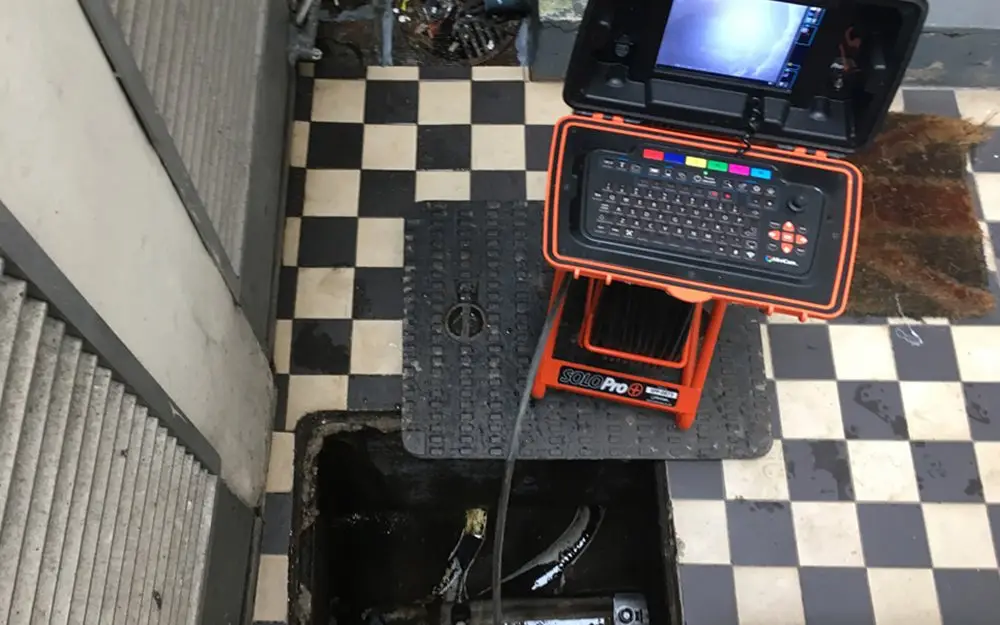In the vast majority of rat scenario’s we investigate, a drainage defect of some description is the cause of how the rats are entering the building fabric.
The concept of drainage – i.e. channelling our excrement away from our dwellings so it doesn’t contaminate our drinking water – is a relatively modern idea.
It was only 120-odd years ago that the Victorians (notably Joseph Bazalgette) who started to put in London’s underground drain and sewer system.
Before then, excrement was quite literally dumped in the street or in the back garden (cesspits) where it entered the surface water systems and eventually our drinking water.
The Victorians worked out that we could all stop dying of Cholera if we pumped excrement well away from where we drew our drinking water.
So they transformed London via the installation of a below ground sewer and drain network which represented an incredible feat of major engineering even by modern standards.
Much of this original network still exists today.
Each house now had sanitation and an external toilet (usually a simple outhouse to the rear) connected to the network. The Victorians didn’t have access to plastic or rubber and so made drains from salt-glazed vitrified clay – the pipes were in imperial measurements, very heavily engineered and diligently laid to give the exact rate of fall.
Four inch or 6 inch pipes with half inch thick walls were selected depending on the estimated volumes of waste and inspection chambers were soundly made from brick with beautifully swept inlets and mortar benching.
‘Traps’ (or U bends) were installed at obsessive frequency as the Victorians believed that Cholera was transmitted by the smell of the sewer.
The fact that original Victorian drainage is still in existence in abundance today shows what a fantastic and skilled job they did of it.
In terms of rats, clay or cast iron pipes are impossible to gnaw through and the Victorian obsession with water traps made it difficult for rats to pass through and enter the drainage networks beneath our houses.
Forward wind to the modern day and the approach to drainage has taken a big step backwards.
Gone are the diligent Victorian drainage engineers – back then the man putting the drains in on a new build was probably the most qualified guy on site; these days it was most likely the guy that jumped off the digger which scooped out the foundations.
Gone are the heavily over-engineered clay and cast iron pipes – flimsy modern PVC drainage is universal with its rubber O-rings and flexible couplings.
A 4mm PVC pipe or a rubber flexible coupling offers very little obstacle to a rat once it’s found an edge to chew on – it takes a matter of hours for it to gnaw through.
Rat populations within sewers have risen dramatically over the years due to the increased food supply within (think of what you scrape off your plate into the sink every night) and warmer winters.
Also people now chop and change their properties with much more frequency than previous generations sparked by the DIY boom – this means the bullet proof Victorian network now has sections of plastic botched to it and redundant sections of pipework crudely blanked off.
All of these factors show no sign of changing or relenting and so mysterious scratching and rustling will become increasingly common for the London property dweller giving much mystery to its origin until a chance encounter one night whilst visting the fridge clarifies all….
To make matters worse, the pest control industry hardly touches on drainage issues in the control of rats instead relying on the drainage industry to cover the knowledge on this one.
But the drainage industry has no understanding of rats and what they are capable of and so typically overlooks the problems giving rise to the infestation.
This is precisely that niche that Pestology fill and it’s a lonely market at the minute.
We understand drains and we have all the expensive equipment to look at them.
We understand rats, know their capabilities and can predict their behavior.
We understand building construction and therefore the weaknesses that rats can exploit (both below and above ground).
We strongly believe there is no problem that we can’t solve as it just comes down to logic at the end of the day.
These creatures don’t ‘journey up from the centre of the earth’ (as one customer put it) and so it’s just a question of finding out how they are getting in and putting that right.
And in most situations, its modern drainage!


